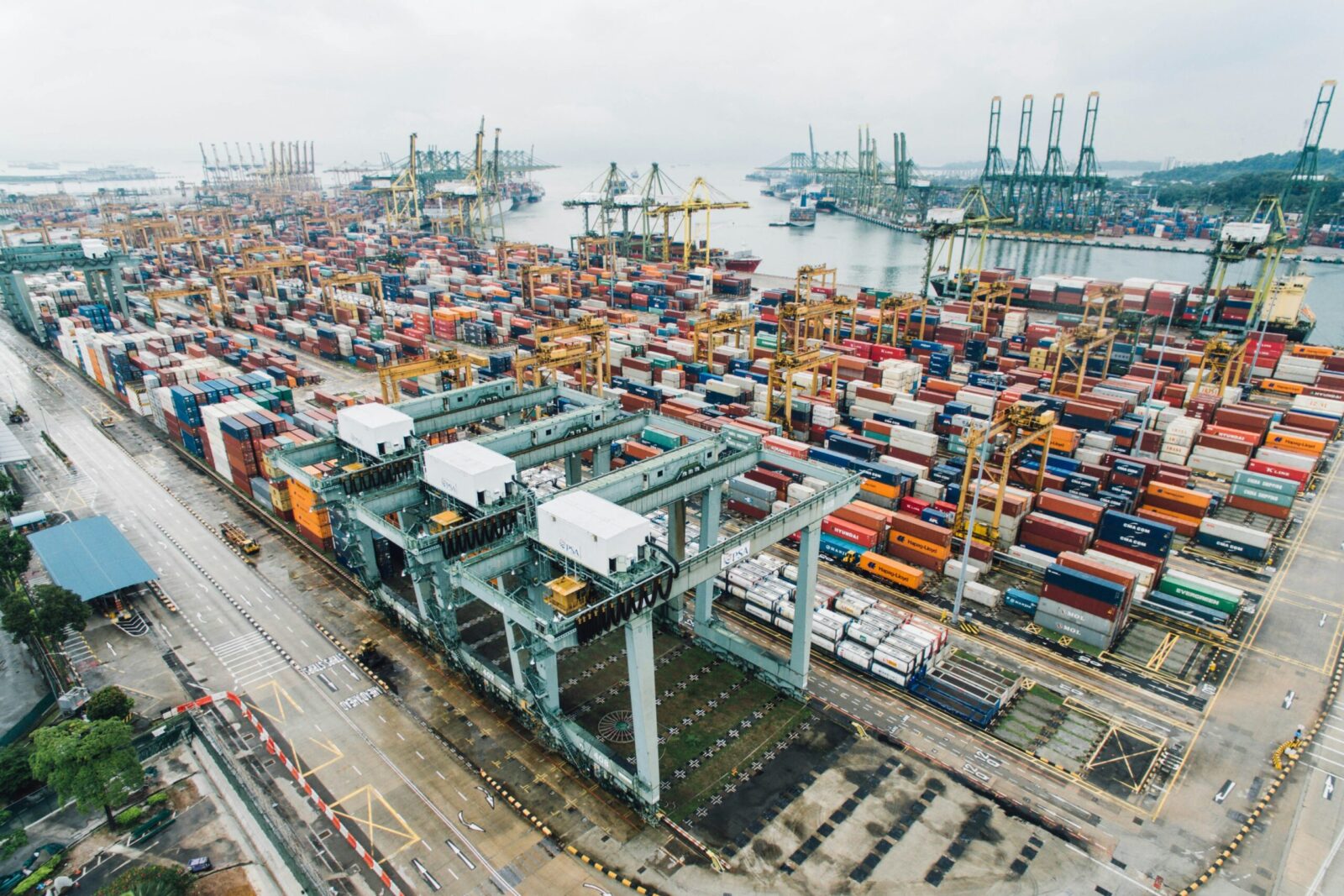
How to Optimize Supply Chain Management?
Introduction Today’s complex and turbulent business environment requires effective supply chain risk management. As global supply networks become more intertwined,...

Get 20€ off on your first order!
Company ESG objectives require supply chain sustainability. It affects almost every area of a company, from environmental effect to social equity and regulation. Companies prioritise supply chain sustainability when they consider their ESG impacts. This article examines sixteen supply chain sustainability techniques that reduce environmental impact, promote social responsibility, and use data and technology. These methods can help firms achieve global sustainability goals, improve their reputation, and become more sustainable.
Company supply chain sustainability includes environmental and social effects. Supply chain professionals reduce environmental impact and promote social fairness to make their company more sustainable. Companies’ ESG goals often involve supply chain sustainability.
Sustainable supply chains save costs, increase continuity, and boost brand reputation. In 2022, EY surveyed 525 supply chain leaders and found that revenue growth and pressure from partners, consumers, and staff drove sustainability.
Supply chain specialists must balance company priorities when making operational decisions. To meet a manufacturer’s ESG aim of minimising environmental harm by employing sustainable materials, the supply chain team may move from traditional cotton to organic cotton, which requires less water.
Here are 16 top supply chain sustainability strategies.
The International Energy Agency reports that transportation uses the most fossil fuels—coal, oil, and natural gas—which are nonrenewable and release greenhouse gases. According to the U.S., transportation emits the most greenhouse gases. Environmental Protection Agency. Transportation emissions reduction is crucial to supply chain sustainability.
Companies can achieve this by ordering materials, parts, and products more effectively. One large order with a vendor instead of multiple smaller ones may reduce greenhouse gas emissions by reducing the number of cars, planes, and ships on the road, sky, and sea.
Domestic product distributors may reduce emissions by delivering items more effectively to warehouses, shops, and customers. Consolidating goods loads into single vans with transportation management software helps Unilever minimise CO2 emissions. Businesses may cut delivery routes, employ electric automobiles, or power trucks, cargo ships, and planes using biofuels from vegetable oils, animal fats, or recycled cooking grease.
Distribution outsourcers can choose green transport vendors. They may also explore LTL shipping instead of FTL. Instead of reserving a full truck, LTL combines shipments from numerous clients to maximise truck space and optimise delivery routes, minimising emissions from any one client.
Recycling is essential to the circular economy, which shares, repairs, reuses, and recycles goods. The circular economy conserves finite natural resources and lowers landfill waste, which releases greenhouse gases. Circle Economy, a circularity organisation, reported in 2023 that the world economy is just 7% circular.
Products manufactured from recycled fabrics, plastics, and other materials can help companies build more sustainable supply chains and contribute to the circular economy. Instead of discarding metal waste, manufacturers can melt them into useable parts. A store may buy recycled garments. Companies who design their own products can use bamboo and cork instead of natural metals and fossil fuels.
Companies seeking sustainability should enhance supplier connections and carefully evaluate compliance, which may have nonobvious sustainability risks. A manufacturer may buy textiles from a fossil fuel or sweatshop-labor supplier. By working with the supplier, the manufacturer endorses certain practices, even if its team is unaware.
Onsite vendor facility inspections can boost supply chain transparency along with asking the correct questions when auditing suppliers. They may also employ software to trace materials and items’ origins and manufacturing and transit operations. Supply chain management software may help teams trace a product’s serial number, find its materials supplier, and evaluate its sustainability efforts. Finally, organisations may hire a consultancy to identify supply chain transparency opportunities.
A 2022 EY survey found that more than 60% of supply chain executives haven’t seen visibility improvements year over year, despite their top priority of end-to-end supply chain visibility.
Onsite vendor facility inspections can boost supply chain transparency along with asking the correct questions when auditing suppliers. They may also employ software to trace materials and items’ origins and manufacturing and transit operations. Supply chain management software may help teams trace a product’s serial number, find its materials supplier, and evaluate its sustainability efforts. Finally, organisations may hire a consultancy to identify supply chain transparency opportunities.
A sustainable procurement policy helps organisations source materials and goods sustainably. A procurement policy may include avoiding plastics, using recycled materials, using locally manufactured resources, and treating manufacturing workers fairly. A company may only work with vendors who don’t use child or sweatshop labour.
Many firms incorporate sustainability concerns in their vendor evaluation questions to comply with these procurement standards. They may ask about a product’s carbon footprint, or the overall quantity of greenhouse gases emitted during manufacture, or whether farmers sprayed pesticides on textile crops. Software like a vendor management system offers each supplier a numerical sustainability score and predicts the environmental and social impacts of procuring items from that source. A 2021 McKinsey poll indicated that only 20% of senior procurement managers at large European corporations use sustainability measures as primary sourcing criterion, despite this recommended practice.
Energy consumption emits the most greenhouse gases worldwide. UN estimates that 80% of energy originates from fossil fuels, which generate hazardous gases and are non-renewable. Wind and solar energy don’t produce greenhouse gases and can reduce air pollution. Prioritising vendors that use renewable energy, powering their facilities with solar panels or wind turbines, and transporting finished goods with electric vehicles or alternative fuel trucks, ships, and planes can make supply chains more sustainable.
Sunlight is cheaper than gas and other nonrenewable energy sources, but it requires upfront investment. Solar.com estimates that installing solar panels on a commercial building can take 10 years to pay for.
Businesses can work together to green their supply chains. A group of manufacturers could require distributors to follow human rights standards. The partnership might minimise manufacturers’ regulatory risk, eliminate human harm, and create customer trust in sustainable companies. This agreement may also encourage additional distributors to operate sustainably.
Collaboration with a business in the same supply chain stage is horizontal. Two furniture producers with nearby operations may place a joint wood supplier order to reduce delivery vehicle CO2 emissions. Vertical collaboration occurs when organisations at different supply chain levels collaborate. A manufacturer and supplier may cooperate to design more sustainable packaging for greater business.
Supply chain specialists affect sustainability efforts, as we’ve seen. Sustainability education helps the team select providers that support ESG goals and track progress.
If supply chain personnel don’t know about industry sustainability challenges, the company may provide it or help them get certificates or degrees. Popular International Supply Chain Education Alliance certifications like Certified Sustainable Supply Chain Professional (CSSCP) need online courses and a final exam. Professional supply chain sustainability courses and certifications are available at top universities. Management may fund these programs or partner with a learning and development company to offer similar courses in-house.
To enhance their supply chain’s environmental performance indicators, organisations should review existing performance to set a baseline, build a plan for how and where to improve, and frequently report on those metrics.
Companies may currently report annually to comply with regulatory obligations, but they might add biweekly or monthly reports to track their supply chain’s environmental sustainability status and make adjustments. Routine environmental reporting can also recruit and keep workers. According to a 2022 Oracle-Savanta ESG study, 83% of people are more willing to work for companies that clearly demonstrate progress on environmental and social issues, and 69% would leave their current employer for one that does. Regular reporting could gain customers—91% want businesses to be more accountable on sustainability issues, the study showed.
Green technology is technology that reduces a company’s environmental and social effect. A corporation may employ solar panels to generate alternative energy. Companies can employ wind turbines, LED lighting, and plant-based packaging across their supply chain and only work with vendors that do. They may also employ biofuels or electric trucks, vans, and buses to move products without polluting.
As mentioned, solar panels and other green technology require large upfront investments. Model ROI and timetable with finance teams. How quickly would your company recoup the investment of an electric truck fleet due to lower operating expenses and better uptime than gas-powered trucks? Can a sustainable brand reputation boost sales?
Businesses that operate locally can increase supply chain sustainability. A manufacturer may use local suppliers to reduce its carbon footprint and protect local jobs from national suppliers.
Companies may also have supply chain teams and other staff participate in community cleanups and other green or social justice activities. These actions can improve sustainability and talent acquisition and retention—65% of workers worldwide desire to work for a firm with a strong social conscience, according to a 2022 PwC survey. These efforts can help boost brand awareness and reputation with current and potential customers.
Clear, measurable supply chain sustainability goals improve an organization’s chances of success. These frequently reflect organisational goals. A corporation may want to lower its carbon footprint, which is the total amount of CO2 emissions produced by buying or creating items, delivering services, and conducting operations. Supply chain experts may design green procurement strategies that involve buying from biodegradable packaging providers to achieve this organisational goal. The supply chain team may aim to buy 75% of packaging from these providers next year.
Being kind to people is key to supply chain sustainability. As mentioned, supply chain experts must ensure that their suppliers, manufacturers, and other partners don’t harvest or produce resources and goods using child, sweatshop, or slave labour. They must also ensure suppliers pay fair wages and provide safe, humane working conditions. Companies must meet these requirements throughout their internal supply chains.
A 2022 analysis from materials supplier Avery Dennison estimates that damage or overproduction wastes US$163 billion in inventory worldwide.
Smart factories with robotics, sensors, and software can eliminate supply chain waste. They could install welding robots on an assembly line that make fewer mistakes than humans and avoid scraps while getting software instructions to alter welding conditions. By employing the Industrial Internet of Things (IIoT) to develop production lines that automatically change output based on demand fluctuations, the company may eliminate overproduction.
Another way a shop might reduce supply chain waste is to repurpose finished products to manufacture new ones. For instance, it may create a buyback program where customers trade old clothes for new product discounts. The shop sent unsold goods to the manufacturer to build new clothes.
Sustainable, eco-friendly packaging options are available to companies. They may create or buy packaging made of recycled paper, plastic, or biodegradable cornflour, seaweed, or other plants.
Sustainable packaging doesn’t always have zero environmental impact, showing that supply chain sustainability is about making better decisions, not removing them. Since paper and some plastics degrade over time, companies can only use them a few times before they end up in landfills.
Sustainable packaging might be more expensive, which worries companies. Boston Consulting Group and Trivium Packaging found that 74% of consumers would pay more for it in 2020.
Companies can improve their sustainability strategies by performing comprehensive supply chain data analytics. Tracking and analysing transportation or production CO2 emissions can show increases, anticipate future emissions based on trends, and help a manufacturer reduce emissions. A manufacturer with a smart factory that connects machines to the internet can utilise data analytics to automatically limit production based on projected demand drops, minimising needless overproduction.
Current market conditions make supply chain sustainability a strategic advantage as well as a legal or ethical need. Companies can reduce their environmental impact, promote social fairness, and improve supply chain efficiency by using the sixteen techniques above. Each technique can help a company achieve its ESG goals, from lowering emissions and using recycled materials to investing in green technology and creating sustainability targets. These methods can help organisations succeed and stay ahead in an eco-conscious world as they prioritise sustainability.
Thank you! You've signed up for our newsletter.



















Introduction Today’s complex and turbulent business environment requires effective supply chain risk management. As global supply networks become more intertwined,...

Lean logistics applies lean management to supply chain performance. Lean Logistics eliminates non-value-added procedures to improve commodity flow and cut...

Introduction Rapid technical breakthroughs and changing market conditions are shaping supply chain management. Businesses must adapt to these changes to...

Introduction Today’s complex and turbulent business environment requires effective supply chain risk management. As global supply networks become more intertwined,...

Lean logistics applies lean management to supply chain performance. Lean Logistics eliminates non-value-added procedures to improve commodity flow and cut...

Introduction Rapid technical breakthroughs and changing market conditions are shaping supply chain management. Businesses must adapt to these changes to...
Get 20€ off on your first order!
Save 30% by buying directly from brands, and get an extra 10€ off orders over €100
Save 30% by buying directly form brands, and get an extra 10€ off orders over €100